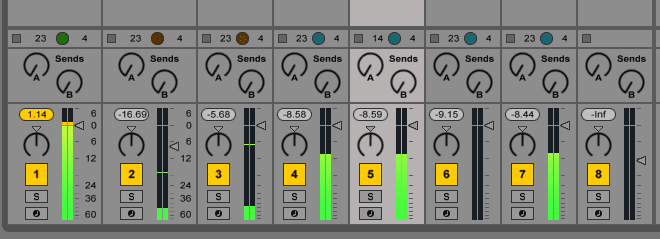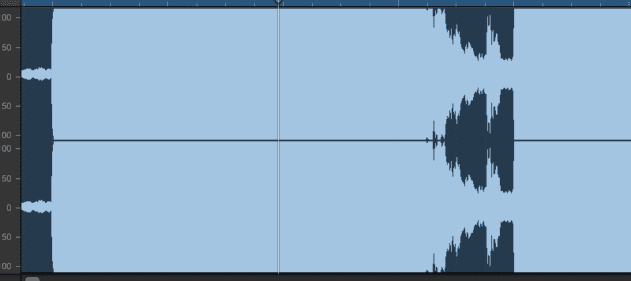Dynamic range and headroom
Dynamic range, in audio terms, usually refers to the difference (in dB) between the quietest and loudest possible signals that can be accommodated by the given piece of equipment or scenario.
For the human auditory system, this is roughly 140dB – where the quietest audible signal (at the so-called ‘threshold of hearing’) is 0dB and 140dB is 1014 times more intense (and beyond the threshold of pain!).
Pinpointing the exact points of ‘quietest’ and ‘loudest’ can be tricky as we have to look at things like noise and signal saturation, where the effects can be blurred.
For example, audio CDs (which are encoded at 16-bit) have a theoretical dynamic range of about 96dB, but this can be perceived as up to 120dB with the smart use of dithering – a process that, somewhat counterintuitively, adds a specific type of noise back into the signal path.
24-bit audio offers the potential to capture a range greater than 140dB – larger than the range of human hearing – which is possible with some microphones, but this is heavily dependent on the stability of clocking and quality of ancillary circuitry.
The related concept of headroom can be defined quite broadly as the available dynamic range above the normal peak recording level – in effect, space left ‘just in case’. This is perhaps of most importance in live situations, where recording levels are at their least predictable.
This means that whilst we don’t necessarily need a large dynamic range to play back many types of music, it allows us to have more headroom during the recording and mixing process.
Given that most of us record at 24-bit and our DAWs mix with something greater, there is little need to push peaks right up to the 0dBFS mark when mixing, especially when going over this point can be so sonically problematic.
Loudness
As we’ve already seen, peak level doesn’t provide a clear idea of loudness. In reality, our perception of loudness is determined by where and for how long we hear a sound as well as its spectral make-up and density, amongst other factors.
In theoretical terms, when applied to music, it can be narrowed down to the difference between average and peak levels – the ‘crest factor’. However, even then there is a question over which of the various values are captured, and different metering systems have different ways of dealing with this. In fact, when it comes to mixing on a DAW, in many respects we only really need to know that we’re below 0dBFS – the built-in meters tell us little about how loud or punchy our track really is.
At its simplest, we can make something louder by keeping the peaks in the same place, but raising the quieter bits, and this is exactly what a compressor or limiter enables us to do. In fact, the so-called ‘loudness war’ centres on exactly this – deliberately reducing the overall dynamic range of a signal when producing for a medium that is capable of representing a greater range than any other in recording history.
In reality, though, we can and do use limiting (or more heavy-handed compression) to shape our tracks, but it’s important not to go overboard, especially when delivering tracks to be mastered. It’s virtually impossible to increase dynamic range with any level of success once it’s been reduced by limiters and compressors. Mastering engineers invariably prefer to work with pre-masters that haven’t been heavily processed in terms of dynamics. If you insist on a loud master, chances are they can do a better job of it if you give them dynamic range to work with.
Incidentally, it’s been shown that ‘super-compressed’ mixes (that actually reshape the signal peaks) running through the average radio processing chain only sound more distorted than ‘lesser’ mixes – not louder.


06.43 AM
Came expecting Avicii.
Jah bless.
07.09 AM
Wow, seriously in-depth introduction and then some. Thanks Attack. Blowing away the ‘competition’ again.
09.22 AM
Thanks for this attack! great read, as always. this gs-thread probably adds some interesting details, too: https://www.gearslutz.com/board/so-much-gear-so-little-time/463010-reason-most-itb-mixes-don-t-sound-good-analog-mixes-restored.html (the title is a bit misleading, there is an in-depth explanation of the technical process behind the summing in a daw, check out the posts by paul frindle and skip burrows) I’m not sure about it, but shouldn’t the gain on the individual tracks be about -20 dB rms / -10 to -6 dB peak? i think 0 dbfs on each track can overload most plugins, as there are inter-sample-peaks and probably peaks that are caused by the processing in the plugin. would be interesting to hear your opinion about that. anyway, thanks again, and keep up the good work!
09.42 AM
Rob – thanks for the link. Yes, that kind of range seems about right for a safety-first approach.
01.09 AM
Good article guys! Here’s another great read about gain staging in a digital environment: http://www.masteringmastering.co.uk/gainstructure.html
11.37 AM
great article!
12.42 AM
I’m learning so much from this Guide, this is good stuff thanx man…!!!
02.41 PM
That mastering engineers article explains it all really well. I love Attack mag keep up the good work.
03.10 PM
Highly educational, thanks!